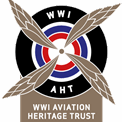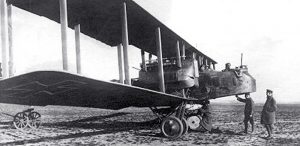The Gotha G.IV was a three-seat, twin-engine biplane capable of carrying over 300 kg of bombs which first appeared over London in broad daylight on 13 June 1917. The skies over the capital were clear that day as over a dozen Gothas crossed the River Thames unleashing their deadly cargo on an unsuspecting populace. The bombers returned to their Belgian coastal base without loss. The throb of the Gothas’ unsynchronised Mercedes motors gave rise to their nickname ‘the wong-wong’s’ and they came again, early in July. A Times correspondent would later write:
‘ Then I heard a weird swish of a bomb as it plunged downwards through the air and the roaring, rending explosion of its fall. Instantly the scene in the streets was wholly transformed. The policeman standing near the monument of Queen Victoria worked himself into a state of excitement, shouting “Take cover! Take cover!” and wildly waving his arms. Everybody ran hither and thither for shelter’…
The second daylight attack caused pandemonium and outright shock: several British defenders took to the air but only one of the bombers was shot down in combat. Drastic measures were swiftly drawn up; the long-running rivalry between British Army and Navy air services would finally be resolved as senior officers pressed for a separate and cohesive air arm to effectively oppose the threat. Several Western Front-based squadrons were recalled to support the air defence with their more modern fighters and experienced airmen. The ramifications of the second daylight Gotha raid has led many historians to believe it a major factor in eventual creation of the Royal Air Force less than a year later.

